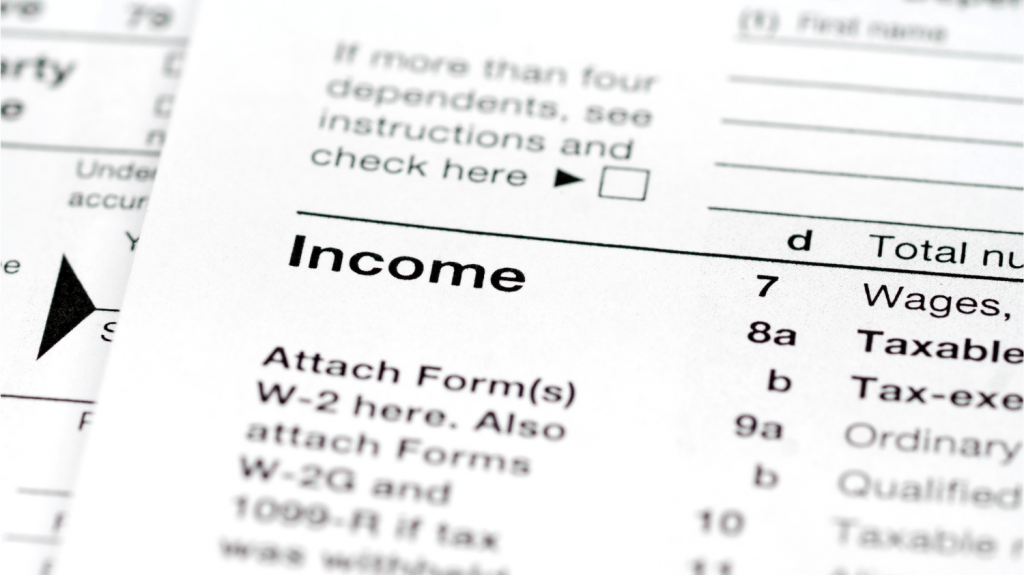How to Battle Wage Garnishment
What are your options to get your finances back on track?
Wage garnishment could leave you and your finances reeling. If you are behind in debt repayments, even if through no fault of your own, your creditor could use a garnishment of your wages to ensure the debt is repaid.
The Garnishment Act allows a creditor to take a big slice of your net wages before you receive payment. For most people, this makes it difficult to keep up with your other financial commitments, such as rent or mortgage payments, utilities and loans or credit cards. While one debt is being paid through the garnishment, your other debts are accumulating. Also, most people are uncomfortable with their personal finances being known by their employer.
The key to moving forward is understanding the wage garnishment law in Manitoba and Northwestern Ontario. Armed with this knowledge, you can employ the best strategy to avoid being garnished.

What is wage garnishment?
Wage garnishment is a tool of last resort used by a creditor to collect a debt. Usually, a creditor will need to sue through the courts to obtain a wage garnishment order.
If successful, an assessed amount, up to 30%, will be deducted from your wages by your employer and paid to the creditor. In general, only when the debt has been repaid in full, or the garnishment lifted, will those payments cease to be deducted from your income.
In certain circumstances, a creditor will not need to go to court to make a wage garnishment. If you owe unpaid taxes, the Canada Revenue Agency can enforce a wage garnishment without suing through a court.
How does wage garnishment work?
There are four parties involved in wage garnishment:
- You (the ‘debtor’)
- The creditor, to whom you owe the money
- Your employer
- The court
To sue for a wage garnishment, a creditor must first secure a Judgement against you, from a court of law. Once they have a court date to do this, they must notify you that they are proceeding to a Judgement, and the date of the hearing. In court, they must present documentary evidence to support their case that you owe them money. The Judgement, if granted, will be for a specific amount.
As the debtor, if you attend that hearing, you will be given the opportunity to provide evidence such as your financial standing, dependents, and income and outgoings.
Important Note: Your creditor is required to serve you with notice of the hearing. Some debtors avoid receiving the service, thinking that, if they cannot be served with the court documents, the creditor cannot proceed. This is not the case. If they are unable to serve you in person, they can get an Order of Substitute Service, and proceed to court. Obviously, if the debtor doesn’t receive the service, they don’t know when the court date is, and they have forgone the opportunity to present their situation to the court. This usually results in the maximum garnishment (30%) being set by the court.
With all the evidence laid out before it, the court will consider the case and make a ruling. Once it has made its decision:
- The court sends the garnishment order to your employer before your wages are due to be paid
- Your employer stops the amount detailed on the garnishment order from your wages, and pays it to the court
- The court pays the creditor
In this process, the court acts as a middleman between the garnishee and the creditor. The employer is responsible for deducting the garnished amounts to pay to the court. In this way they act as a middleman between you and the court.
This process continues until the debt has been paid in full, or you stop working for your employer.
How much can be garnished from my wages?
The law allows up to 30% of your net wages to be assigned under wage garnishment. Your net wages are considered to include salary, bonuses and commissions, after all taxes and other statutory liabilities have been paid. Revenue Canada has been known to take more than 30% if they deem the funds to be “self-employed income”.
When the court assesses how much you can pay under a wage garnishment order, it will consider a host of factors in your ability to pay. It knows there is no benefit in taking so much from you that you could not afford to live. So, while the maximum amount you will be required to pay is 30% of net wages, the court may reduce this with reference to:
- Your family circumstances (e.g. dependents and other financial needs of your family)
- Personal circumstances, including other debts
- Your conduct in court – cooperation is key
- Other family income
The more financially unstable your circumstances, the smaller the amount of wage garnished. For example, if your spouse and dependents are unemployed, or on short-hours contracts, then the court will assess a smaller amount than if your spouse and dependents are all in long-term, stable employment.

How to stop wage garnishment
There are only a limited number of ways to stop wage garnishment. They are:
- Quitting your job. We would not recommend this. For one thing, it may not be as easy as you think to find another job, and you may find yourself both unemployed and in debt. If you do quit, the debt doesn’t go away. It sits there, waiting to be collected. Quitting your job simply delays debt recovery. The debt still needs to be dealt with. Eventually, your creditor will find your new employer, or identify a bank account you hold, and you are back to being garnished.
- Paying the debt in full. Unless you have won the lottery or a family member bails you out of the situation, this is rarely a viable option. However, even if you can’t pay the debt in full, any partial repayments that you make will help the debt to be repaid earlier.
If you are subject to wage garnishment, don’t make payments directly to the creditor. This includes any extra payments that you may be able to make. All payments must go through the court. It’s not unknown for a debtor to make a payment direct to their creditor, and then be required to make a duplicate payment through the court for it to be recognized.
- Petition the court for relief. There may be times when a current wage garnishment would cause financial hardship. In that case, you may be able to petition the court for relief. Again, this is a way to stop wage garnishment at least temporarily, but the debt does not go away.
- Declare bankruptcy. For many people this may be the best solution. When you file an Assignment in Bankruptcy, an automatic Stay of Proceedings goes into place. This Stay prevents all of your creditors from suing you, garnishing your wages or taking any other collection practice against you.
Technically, what you are doing when you file for bankruptcy, is you are signing over everything you own, have a right to, or interest in, to a Licensed Insolvency Trustee, for the benefit of your creditors. While that sounds pretty daunting, the fact is that each province has legislation that protects most of your assets from this process. Things like your personal effects and household furnishings, tools of the trade, including a motor vehicle, some equity in your home, and registered pensions and RRSP’s are all usually exempt from this process. First time bankruptcies usually last for 9 months, during which you receive financial counselling and submit monthly income and expense statements.
Bankruptcy is only available through a Licensed Insolvency Trustee (LIT), so speak to LCTaylor in Winnipeg and Kenora to explore your options and determine if Bankruptcy is an option that would be in your best interests.
- File a Consumer Proposal. For many this is a good option, particularly if you have a secure source of income, would like to pay at least a portion of your debt, but are unable to pay all of it.
A Consumer Proposal is an agreement between you and all of your unsecured creditors. You agree to pay a set amount over a defined period of time (up to five years), after which your entire unsecured debt is extinguished. During this time, a Stay of Proceedings is in place, preventing creditors from taking collection actions against you. While your creditors do have the opportunity to vote for or against your proposal, once the proposal is accepted, it is binding on all creditors, whether they voted for it or not. The payments are set, no interest is added, and if you complete the payments within the prescribed time frame, your debt is erased.
Like Bankruptcy, the first step is to see a Licensed Insolvency Trustee. Consumer Proposals are only available through a LIT. We will help you decide if this route is suitable for your situation, and work with you to determine how much you can afford to pay, and over what period of time. The object is to develop a payment plan which allows you to cover part or all your debt over a specific period. Then you can get back to living, and start enjoying life again.

Wage garnishment options
Being subject to a wage garnishment is not the end of the world, but it can be embarrassing. It can also be more expensive than other options available to you. Exploring those options is key to making the best decision and getting your finances back on track as quickly as possible.
Everyone has periods in life when they battle with debt. To come out stronger on the other side, it’s important to examine as many options as possible. To do this, you should seek help and advice from an LIT at the earliest possible opportunity, while you have a greater number of options than will be available once a Garnishment is in place.
There are strategies you can employ to stop wage garnishment, but the later you wait to explore your options, the more complex these strategies become. If you need wage garnishment help don’t delay. Contact us today in our Winnipeg office at 204-925-6400, use our online contact form to request a free and confidential initial consultation
Northern and Rural Manitoba, outside of Winnipeg or North-Western Ontario call us at 1.800.463.8371






